Bathroom lighting is a detail that should not be overlooked, because the type of light proves to be very important from the moment you wake up, a delicate moment, and in the evening before you go to sleep.
The light in this area of the house must be bright, so you don’t have to struggle to see, but neither too intense nor aggressive. Therefore, it is necessary to choose the right light points carefully, always taking into consideration the danger of the relationship between water and electricity.
To address this need, it is best to use halogen lamps: appliqués, bright ceiling lights, and mirrors are the most suitable types for this function, and their design is so varied that you can stay true to the style of the bathroom.
There are two main types of bathroom lighting: the general one, installed on the walls or the ceiling, and the specific one, located near the mirror or integrated with it.
Why is it important to know which lamps are the best for bathroom lighting?
In your model, whether it is a design or a renovation, you must consider the location of the light points and the best types of lights.
In the bathroom, various functions are performed throughout the day. In addition to the more classic use, in the morning, for example, you wake up with a refreshing shower, so you can face the day. Or it can be a place of relaxation, where you can enjoy a relaxing hot bath after a long workday. It can also take the place of a beauty salon, perfumed by the smell of creams, masks, oils, and so on.
These and many others are why it is necessary to have dynamic, functional, but also atmospheric lighting, which should be organized separately.
Once you have chosen the best type of lamp for the various light points, you should move on to choosing the light fixture for the bathroom. To hit the head on the nail, consider the effect that your client wants to create and the optimal distance from splashing water.
What is the best type of lamp for general lighting?
To understand which lamps are the best for bathroom lighting, we need to start by distinguish the types of lighting that this area of the house requires: general lighting, accent lighting, and accessory lighting.
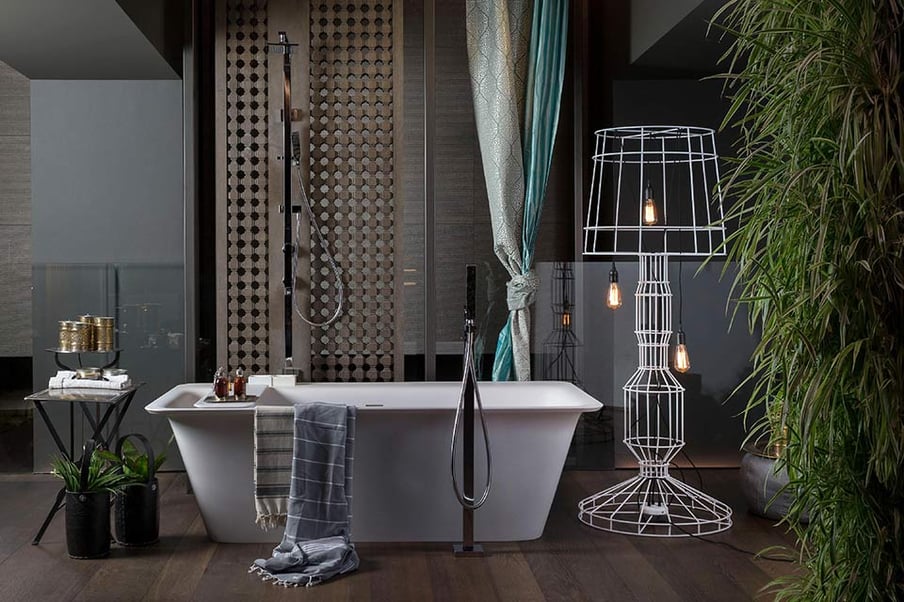
Sisma
General lighting characteristics
General lighting is placed on the ceiling, in the center of the room, and is a type of diffused light capable of illuminating the whole room without creating shaded areas.
You can create this type of lighting with a ceiling light or recessed spotlights, lamps characterized by a high index of protection from water jets and dust. The light should preferably be bright but not blinding, especially at night or in the morning.
Another suitable solution can be a suspension lamp, with recessed LED spotlights, fixed or adjustable, which releases a wide beam of light.
Thanks to LED technology, you can use dimmers: fixtures that allow you to adjust the intensity and hue of the light, to have the perfect brightness at any time of the day, with low consumption.
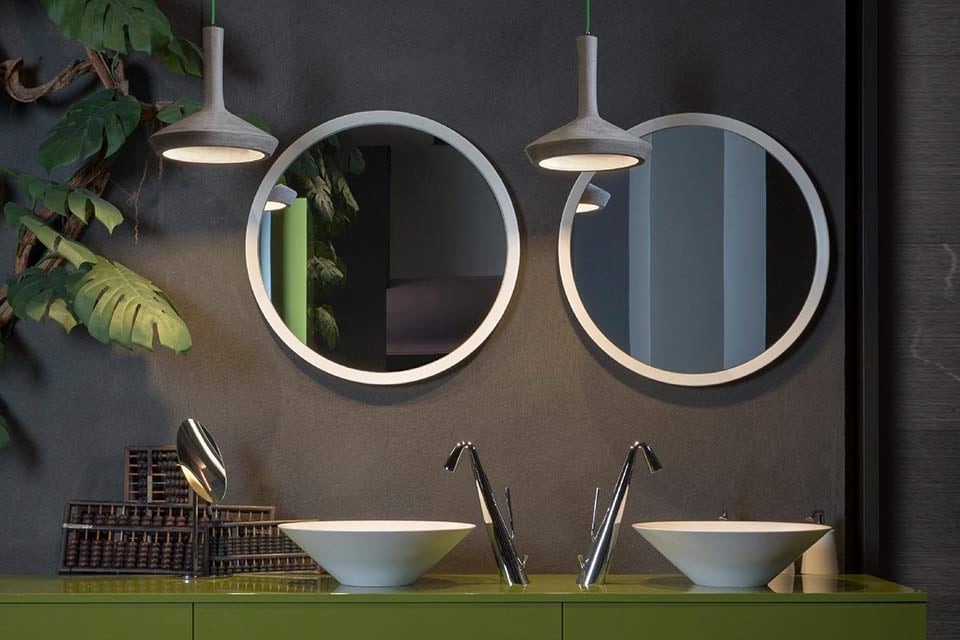
Dharma
Characteristics of accent lighting
Accent lighting, located near the sink and mirror, is essential for carrying out daily personal care and hygiene.
It is a functional light, which must mainly illuminate your face, not so much the mirror, without dazzling or creating shadows. You can install appliqués or spotlights directly on the mirror, on the cabinet, or the wall, or you can install dimmable LED spotlights, which have a narrower light beam.
To create points of bright light in the mirror, you can opt for a high efficiency LED bar to be integrated, or you can apply LED strips to the ends of the mirror.
If you like and want to adopt the idea of positioning them along the edge of the mirror, choose an adjustable model so that your client can adjust the luminous flux as they wish.
Alternatively, if your client agrees, you can replace your mirror with an integrated light: a backlit mirror with integrated LED light emits a very functional diffused light and also represents an excellent interior lighting design solution.
If you want to amaze with a hi-tech effect, you can choose a mirror with an LED profile and "touch" ignition, futuristic and original.
If, on the other hand, the bathroom in question is of modest size and you need to leave room for all of your daily products, you could resort to a cabinet with a mirror and spotlight included.
If you need to design lighting for a slightly retro bathroom, you could place appliqués with a glass diffuser above the mirror, or on the sides. However, remember to choose the finish of the arm structure carefully, in satin silver or bronzed gold, to match the bathroom faucets, in order to create a vintage and elegant effect at the same time.
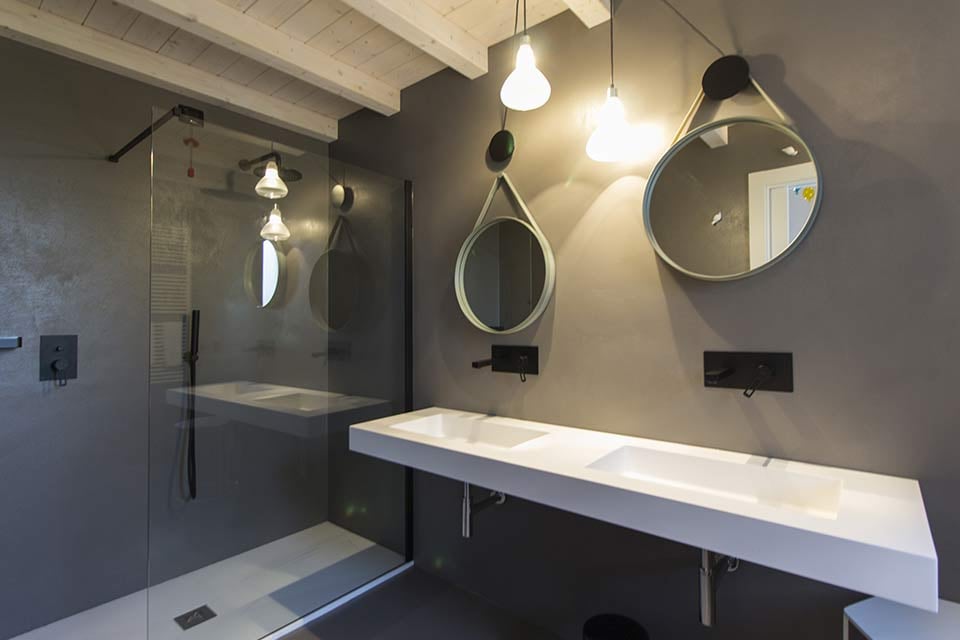
Make Up
Characteristics of accessory lighting
If the dimensions of the bathroom in question allow it, you can also add other small sources of accessory lighting: recessed spotlights are the ideal solution both to accentuate some precise points and reproduce a relaxing atmosphere near the bath or shower, creating a SPA effect, perhaps with the possibility of changing the color of the light and thus enjoying the beneficial effects of chromotherapy.
Accessory lights are a very modern choice and, cleverly distributed in the bathroom space, can act as a contour in some areas, creating angles of light and enhancing the spaces.
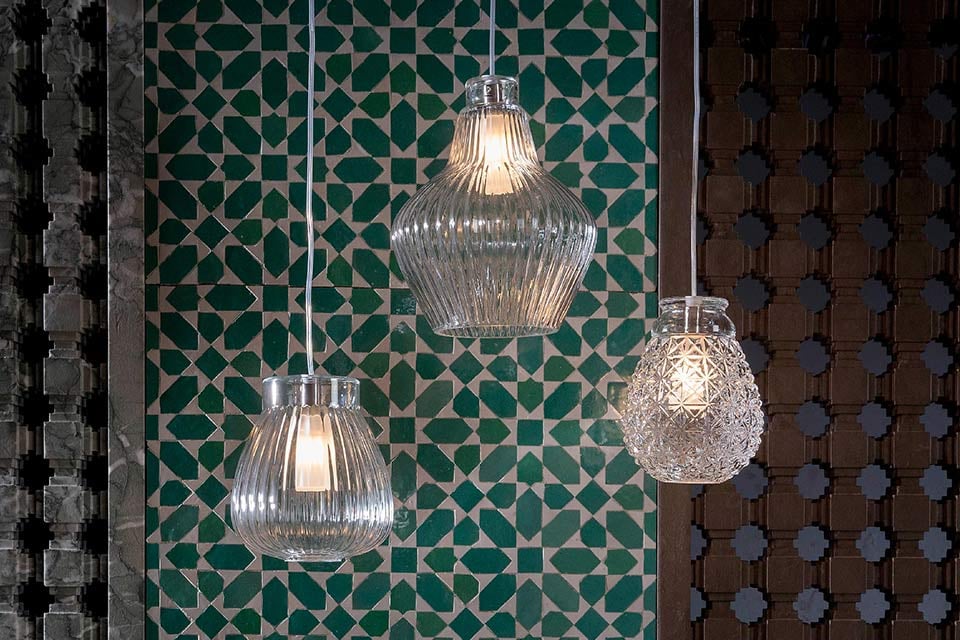
Ceraunavolta
Some other suggestions for your bathroom lighting project
Lighting, as we have seen, plays a very important role in the style of your bathroom.
In your project, you can also provide 3 different types of lighting that harmoniously coexist: general light to illuminate the room, a functional light near the sink, and an accent light above the mirror--or integrated--to facilitate daily hygiene and beauty.
Choose the best types of lamps to enhance your spaces, both in terms of material, shape, and color. They must respond to your client's personal taste and must be resistant and easy to maintain over time.
The materials used for bathroom lighting must be resistant to humidity and vapors and anti-corrosion, such as stainless steel, PVC, and aluminum; the style of the lamp and the finishes must perfectly match the furnishings and style designed for the entire room.
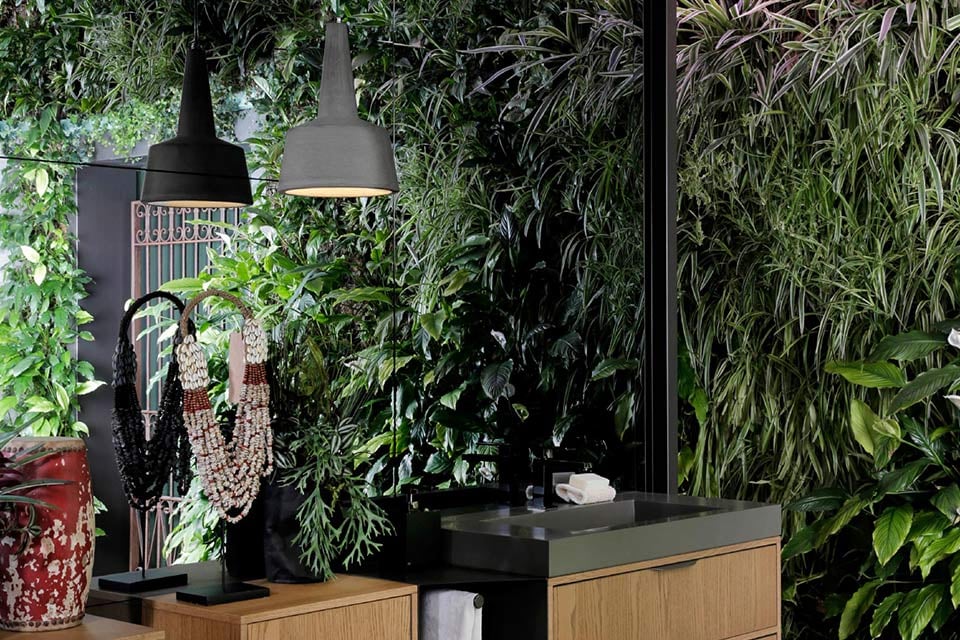
Settenani Collection
All bathroom lamps, such as spotlights and mirror lights, usually have a bulb included, or an integrated LED light.
Whether or not there is a light bulb, you can still choose the one you prefer, provided that you check the maximum supported power and the relative attachment on the appliance packaging.
Furthermore, the color of the light emitted by the lamp affects the functionality and the atmosphere you want to recreate with light; for example, white light is distinguished by its hue, the degree of heat measured in Kelvin degrees.
You can choose a warm, cold, or natural light, depending on the area of the bathroom and the type of light.
For the mirror light, for example, natural light is optimal, because it does not alter colors or highlight defects.
For spotlights near the bath or shower, you can instead choose the new LED, CCT, and RGB technologies, which allow you to adjust the hue of the light and offer a wide range of colors to choose from.
At this point, we recommend that the installation of the lamps in the bathroom be entrusted to an electrician since, being a professional expert, they are well aware of the safety regulations, which define, in fact, all that is needed for safety in a humid environment.
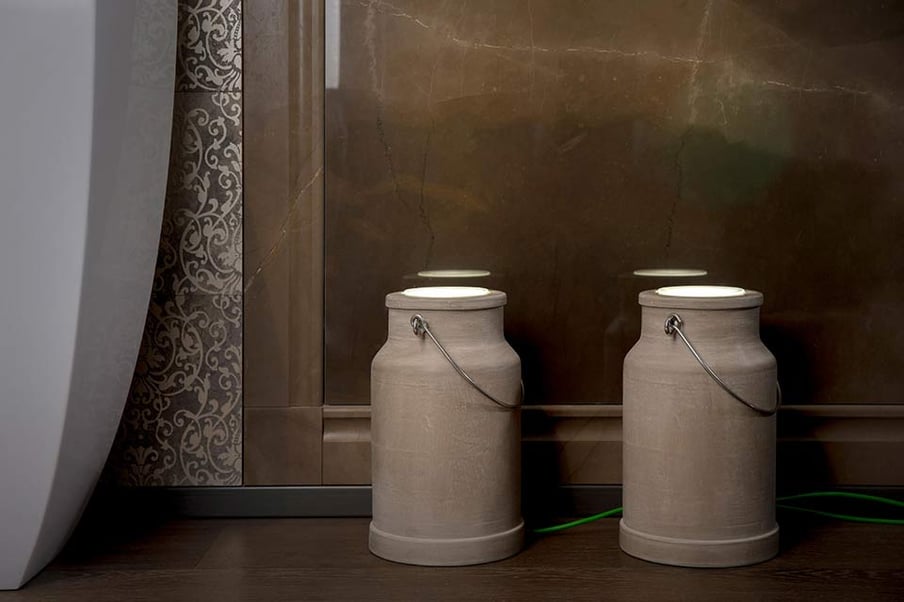
Via Lattea
The bathroom is divided into several protection zones: the first is the shower or the bathtub, which corresponds to zone 0.
Each protection zone has its own guidelines for bathroom lamps:
- Protection zone 0: inside the shower or the bathtub. Only low protection voltage up to 12 Volt and at least IPX7 protection degree.
- Protection zone 1: vertical confines of bath or shower. Only low protection voltage up to 12 Volt and at least IPX4 protection degree. Without a shower, the height of the area is up to 120 cm around the faucet--height limitation in both cases: 2.25 m.
- Protection zone 2: 60 cm around protection zone 1--minimum degree of protection IPX4. In the case of water jets such as massage showers, a minimum degree of protection IPX5.
N.B. It is important to underline that transformers must never be positioned in protection zones 0 and 1 and that sockets and switches must not be in protection zones 0, 1, or 2.




